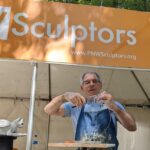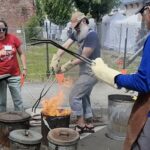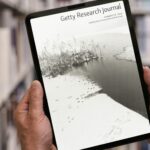Using the Instagram Collab function allows you to co-author a post or Reel with another account, ensuring the content appears on both profiles and reaches all of your combined audiences.
Education
Still Seeking Volunteer Demonstrators!
PNWS members have the opportunity to do live sculpting demonstrations at several upcoming events:
Troutdale Art Festival Raku – 2024 – Videos!
PNWS partnered with Mt. Hood Community College to do Raku demos at the 2024 Troutdale Art Festival. Masks were prepared ahead of the event by MHCC students and PNWS members then subject to RAKU during the fair. For the details and background about Raku check out this site: How to Fire Raku Pottery: 11 Steps […]
Artistic journal is now free
Getty is pleased to announce that the spring 2024 issue of the Getty Research Journal, an open-access, peer-reviewed scholarly journal on the visual arts, is now available. Published by the Getty Research Institute (GRI) since 2009, the Getty Research Journal has presented articles covering the visual arts of all cultures, regions, and time periods. Topics featured in the journal relate […]
Regional Arts & Culture Council – Meet Public Arts Experts
Have you wondered how and where to apply for public art calls? What are the different steps of proposing and executing a public art project (from sketches, to insurance, permitting and more)? How to work with a team to create a mural? How to get a private commission and who your collaborators might be? Have […]
The Hallie Ford Museum of Art at 25
Enjoy Free Admission Throughout October In honor of our twenty-fifth anniversary, the Hallie Ford Museum of Art 700 State St, Salem, OR 97301 will offer free admission for the entire month. The Hallie Ford Museum of Art opened its doors for the first time in October 1998, and over the past quarter century has built […]
Freelance Finance for Creatives: Empowerment thru Education
RACC is pleased to host a two-hour workshop this fall on the ins and outs of managing your finances as a freelance creative.
OSA is looking for an Education and Program Manager
Oregon Society of Artists, on of our affiliates, has a position open. The role includes coordination and communication with artists, members and the public for classes and related activities. It’s a great opportunity for a motivated, organized web-savvy person. To apply, download job description.




